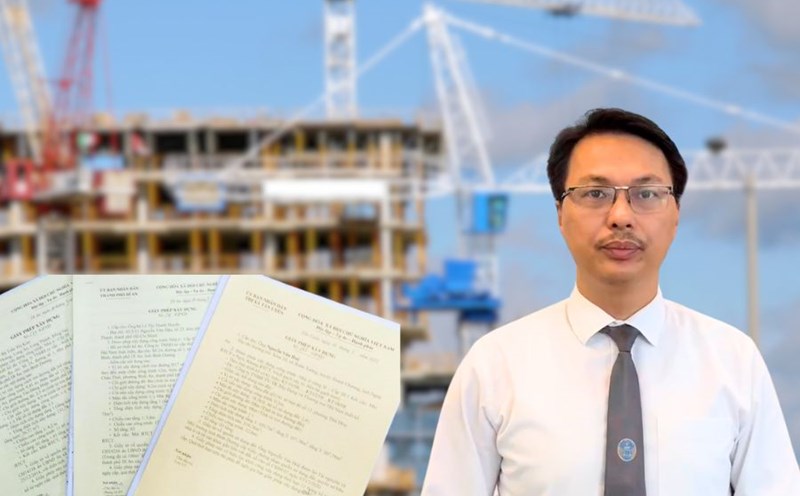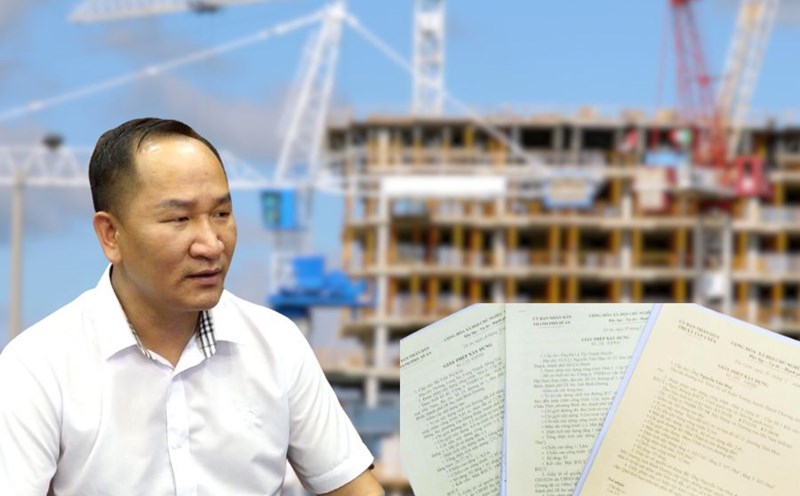In Official Dispatch No. 78/CD-TTg, the Prime Minister requested to reduce the procedures for granting construction permits for works in construction investment projects with detailed plans at a scale of 1/500 or works in areas where urban design has been approved.
According to current regulations, two groups of works must be granted a construction permit, including real estate projects (commercial housing, high-rise buildings, apartments, factories in industrial parks) and individual houses in urban residential areas.
Mr. Nguyen Quoc Hiep - Chairman of the Vietnam Association of Construction Contractors, Chairman of the Board of Directors of GP Invest - commented that removing construction permit procedures will contribute to shortening the time for processing documents for investment projects. This is a move to cut administrative procedures that is positively evaluated by the business community.
However, according to Mr. Hiep, in addition to removing the construction permit, the Ministry of Construction needs to review and issue clear instructions on the implementation process of a construction investment project. Determining specifically which steps can be streamlined and which steps should be eliminated will help businesses and people easily grasp and implement in order. He emphasized that this is the key to truly effective reform in this field.
Talking to Lao Dong, Mr. Pham Duc Toan - General Director of EZ Real Estate Investment and Development Joint Stock Company (EZ Property) - said that for real estate and construction enterprises, the construction permit is the final step in the investment process chain. From detailed planning at a scale of 1/500, appraisal of the basic design, fire prevention and fighting appraisal, environmental impact assessment to many other types of sub-licenses, businesses must complete many procedures before being granted a construction permit. In fact, many projects have to take a whole year to complete these procedures.
"In essence, the construction permit is currently a major barrier to project progress. Going around many agencies such as the Department of Construction and Fire Prevention and Fighting takes businesses a lot of time. Extending investment time not only increases financial costs but also causes businesses to lose investment opportunities in the market. In many cases, construction permits also come with conditions such as completing financial obligations to the State, from land use fees to taxes to being licensed" - Mr. Pham Duc Toan shared.

Abolishing construction permit procedures is a big step forward, helping to reduce cumbersome administrative procedures. However, if the construction permit is truly revoked, it is necessary to study and reduce the steps of pre-inspection appraisal and assign the responsibility for post-inspection to the State management agency. The documents on basic design, construction measures, fire prevention and fighting, environmental assessment, etc. should be controlled according to the post-inspection mechanism but still ensure technical requirements. Thus, instead of checking in advance, the management agency switches to checking after construction, but must strictly control and strictly handle violations.
On the people's side, if the construction permit is revoked, it must be accompanied by specific regulations and rules to ensure urban order. With urban areas that have been approved for detailed planning 1/500 and have a typical design, construction permits should be exempted for works built according to the model. For example, in an area where there are many apartment buildings with similar designs, the following buildings may be exempted from licenses to speed up progress.
For residential areas, there should be clear regulations on construction density, height, recline... so that people can rely on that when designing and registering for construction. At that time, instead of applying for a permit, people only need to register for construction according to the prescribed form. State agencies can conduct post-inspections and strictly handle violations. This approach both reduces administrative procedures for people and reduces pressure on the public authority apparatus.
However, to do this, it is necessary to publicize all planning data, urban design, construction criteria... People must know what they are allowed to build, how many floors to build, and how much space is behind. This information should be digitized and posted on the electronic information portal for easy lookup and monitoring. At that time, construction registration becomes more transparent and simple, while creating a clear legal basis for handling violations.











